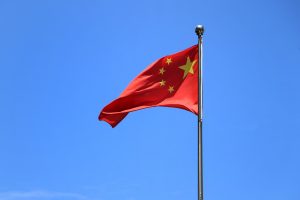China’s coercive foreign policy, coinciding with the era of “wolf warrior” public diplomacy popularized by diplomat Zhao Lijian, is a pervasive issue for policymakers. However, China’s use of economic sanctions and other coercive tools to achieve diplomatic goals has long predated the wolf warrior trend in public messaging.
Sanctions, often unofficial, have been Beijing’s longstanding tool to punish foreign countries’ perceived transgressions. Andreas Fuchs and Nils-Hendrik Klann found in a prominent 2013 study that countries hosting the Dalai Lama – branded a Tibetan “separatist” by the Chinese Communist Party (CCP) – experienced on average a 17 percent decline in exports to China. After Seoul deployed the THAAD missile defense system over China’s objections, Beijing slapped a provocative ban on South Korean cultural exports and accompanying restrictions on Chinese tourism to South Korea. The economic damage remains a sour issue in South Korean politics. Even earlier, in 2010, China choked off imports of Norwegian salmon after the Nobel Committee awarded the Peace Prize to imprisoned dissident Liu Xiaobo.
Beyond economic tools, China has employed cyberattacks on offending countries and denied entry visas to foreign scholars critical of its regime as a method of applying pressure.
Yet countries around the world do not appear to be capitulating to Beijing’s widespread coercion. The China Index, a project by Doublethink Lab to measure PRC influence in 82 countries, has discovered strong evidence to suggest that China’s coercive diplomacy does not result in target countries adopting foreign policies favorable to Beijing.
The China Index is the product of collaboration within a global network organized by Doublethink Lab. The index quantifies Chinese influence through a series of 99 Indicators. The Indicators, designed by an international Index Committee of China scholars, each capture a discrete phenomenon of PRC influence that can be proven to exist with documentary evidence. A sample Indicator reads, “In my country, scholars or academics have been denied visas to travel to the PRC after expressing opinions or producing scholarship that is critical of the PRC.” Data from Indicators are collected through a global network of over 180 experts and partners in countries covered by the Index.
Our 99 Indicators are classified by Domain, but also by three types or “Layers”: Exposure, Pressure, and Effect. Exposure Indicators test for the presence of vectors, like trade dependencies, through which Beijing can translate influence. Pressure Indicators examine efforts by China to execute coercive diplomacy. Effect Indicators measure the extent to which countries have taken actions favorable to China.
Through regression analysis of data for 82 countries in the 2022 China Index, we found that there was no statistically significant correlation between scores for the 17 Indicators for Pressure and the 21 Indicators for Effect (R = -0.01, P-value > 0.1). In other words, countries experiencing high levels of coercion from China are no more likely to adopt policy positions favorable to Beijing.
This surprising finding is situated within persistent debate regarding China’s use of coercive diplomacy to achieve diplomatic goals, and indeed a larger international relations discourse sometimes expressed as “coercion theory.” The branch of international relations explores why strong states, particularly the United States in the post-Cold War era, have struggled to force weaker states to adopt favorable foreign policy positions through military and economic sanctions.
The theory in part explores backlash to coercion or a “rally around the flag effect” within the populations of recipient states. Indeed, in South Korea after China’s economic retaliation to its adoption of the THAAD missile defense system, the Korean population’s support for China cratered. Such resistance within populations of recipient states may explain why leaders do not capitulate to pressure from Beijing.
Another explanation could be that China is unwilling to sustain pressure on recalcitrant states; the aforementioned study by Fuchs discovered that China’s restrictions on offending states’ exports melted away after an average of one year. Research suggests Norway wriggled out of China’s ban on salmon imports by channeling its fish through Vietnam.
If China’s coercive foreign policy is indeed ineffective, why has Beijing persisted in applying the strategy from Europe to Oceania? Certain scholars have suggested that China’s coercive diplomacy isn’t intended to achieve actual foreign policy outcomes, but rather to satisfy nationalist polities within China that cheer at the punishment of perceived enemies. Under such a rationale, the CCP may simply not care that its efforts to pressure countries into capitulation are fruitless.
However, Beijing often executes coercive tactics whose capacity to stir up nationalist sentiment is questionable. China’s recent restrictions on pineapples grown in Taiwan, for instance, are hardly likely to excite crowds in China who might ordinarily delight in larger actions.
Another explanation for China’s diplomatic approach could be that it aims to convince third-party states from engaging in disagreeable action in the first place. After all, countries such as South Africa and Russia have barred the Dalai Lama from entering their borders without China having to levy any sanctions – the mere threat was enough.
Ultimately, China may simply not have realized that its efforts to coerce countries have been ineffective in the aggregate. Indeed, the CCP’s recent sidelining of the vociferous diplomat Zhao Lijian may signal that the party is turning its back on an aggressive strategy of foreign relations.
At the very least, those grappling with Beijing’s coercive diplomacy may be soothed by Doublethink Lab’s evidence that it does not deliver foreign policy capitulation.































